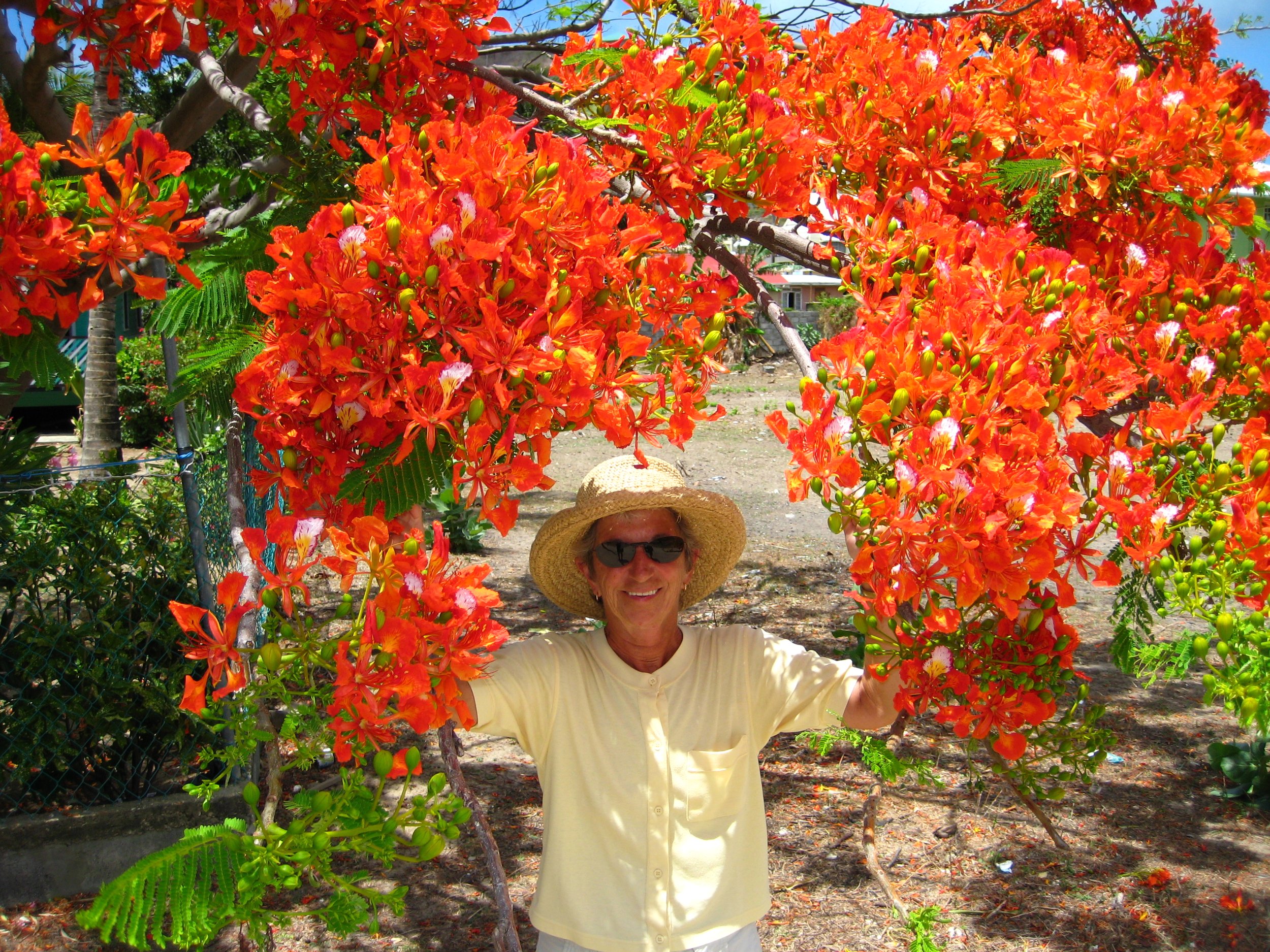St Vincent and the Grenadines is an island country in the Caribbean, located at the southern end of the eastern border of the Caribbean Sea where the latter meets the Atlantic Ocean.
It’s 369 km2 (142 sq mi) territory consists of the main island of Saint Vincent and, south of that, two-thirds of the northern part of the Grenadines, a chain of 32 smaller islands. Some of the Grenadines are inhabited — Bequia, Mustique, Union Island, Canouan, Petit Saint Vincent, Palm Island, Mayreau, Young Island, whilst the other islands are not. Most of St Vincent and the Grenadines lies within the Hurricane Alley.
The population of St Vincent 111,551 total inhabitants, of which 69% identified as African; 19% as mixed African-European; 6% as East Indian; 4% as European and 2% as Carib Amerindian.

Picture courtesy of The Neverland Weblog
National Flower
The national flower of St Vincent and the Grenadines is the Soufriere Tree (Spachea Perforatais). Whilst native to Madagascar, it was introduced to the Caribbean by the French Governor Monsieur de Poincy 1639-60. The seed pods are often used in arts and crafts.
History
Before the arrival of the Spaniards, the Kalinago natives who inhabited the island of St. Vincent called it Youloumain, in honour of Youlouca, the spirit of the rainbows, who they believed inhabited the island. Various Amerindian groups also settled on St. Vincent and the Grenadines, including the Ciboney, Arawak, and Kalinago people.
Christopher Columbus, the first European to reach the island, named it after St. Vincent of Saragossa, whose feast day it was on the day Columbus first saw it (22 January 1498). The name of the Grenadines refers to the Spanish city of Grenada.
Various attempts by the English and the French to claim the island proved unsuccessful, and it was the French who were first able to colonise the island, settling in the town of Barrouallie on the leeward side of St Vincent in 1719. The French brought with them enslaved African prisoners of war to work the plantations of sugar, coffee, indigo, tobacco, cotton and cocoa.
The British captured the island and drove the French out from Barrouallie, confirmed by the Treaty of Paris (1763). The British laid the foundations of Fort Charlotte and brought with them enslaved African prisoners of war to work on the island plantations. Two wars led by conflict with the Island Caribs, supported by the French in 1772 and 1795 were put down the British in 1797. 5,000 Black Caribs were exiled to Roatán, an island off the coast of Honduras and Belize. In 1806, the construction of Fort Charlotte was completed, but suffered considerable damage when the volcano, La Soufrière erupted in 1812.
After the abolishment of slavery, indentured labour was imported from India, between 1861-1888 alongside immigration of labour from Madeira. The further eruptions of La Soufriere in 1902 killed 2000 people and again in 1979 the eruption caused much damage to the agricultural land and crops.
On 27 October 1979, St Vincent and the Grenadines gained full independence, whilst remaining in the British Commonwealth, with Queen Elizabeth as Monarch, represented by a Governor-General. The government is one House of Assembly of Saint Vincent and the Grenadines, seating 15 elected members representing single-member constituencies and six appointed Senators.
Geography, Climate and environment
On 9th April 2021 La Soufrière volcano erupted again, sending ash several miles into the atmosphere, causing 16,000 people to be evacuated in the days leading up to the eruption (see image)
The island of St Vincent is volcanic and heavily forested, and includes little level ground. Other major mountains on St Vincent are Richmond Peak, Mount Brisbane and Colonarie Mountain.
The Botanic Gardens St Vincent are the oldest of their kind in the Western Hemisphere. Conservation of rare species of plants has been practised since the Gardens were founded in 1765, with a breadfruit tree from the original plant brought to the country by Captain Bligh (of The Bounty fame) in 1793.


Volcano image courtesy of Navin Pato Patterson
Culture, music, dance and Carnival
Daniel Defoe (1660 – 1731) published his book Robinson Crusoe in 1719, which relates the story of a man's shipwreck on a desert island for twenty-eight years and his subsequent adventures. Throughout its episodic narrative, Crusoe's struggles with faith are apparent as he bargains with God in times of life-threatening crises, but time and again he turns his back after his deliverances. He is finally content with his lot in life, separated from society, following a more genuine conversion experience. The story has been thought to be based on the life of Alexander Selkirk, a Scottish castaway who lived for four years on a Pacific island called "Más a Tierra" (now part of Chile) which was renamed Robinson Crusoe Island in 1966. Defoe also wrote a pamphlet about St Vincent and Grenadines.
English is the official language. Most Vincentians speak Vincentian Creole. English is used in education, government, religion, and other formal domains, while Creole (or 'dialect' as it is referred to locally) is used in informal situations such as in the home and among friends.
Music is popular and includes big drum, calypso, soca, steelpan and reggae. String band music, quadrille and traditional storytelling are also popular. One of the most successful St Vincent natives is Kevin Lyttle. He was named Cultural Ambassador for the Island in 2013.
The national dish is roasted breadfruit & fried jack fish.




